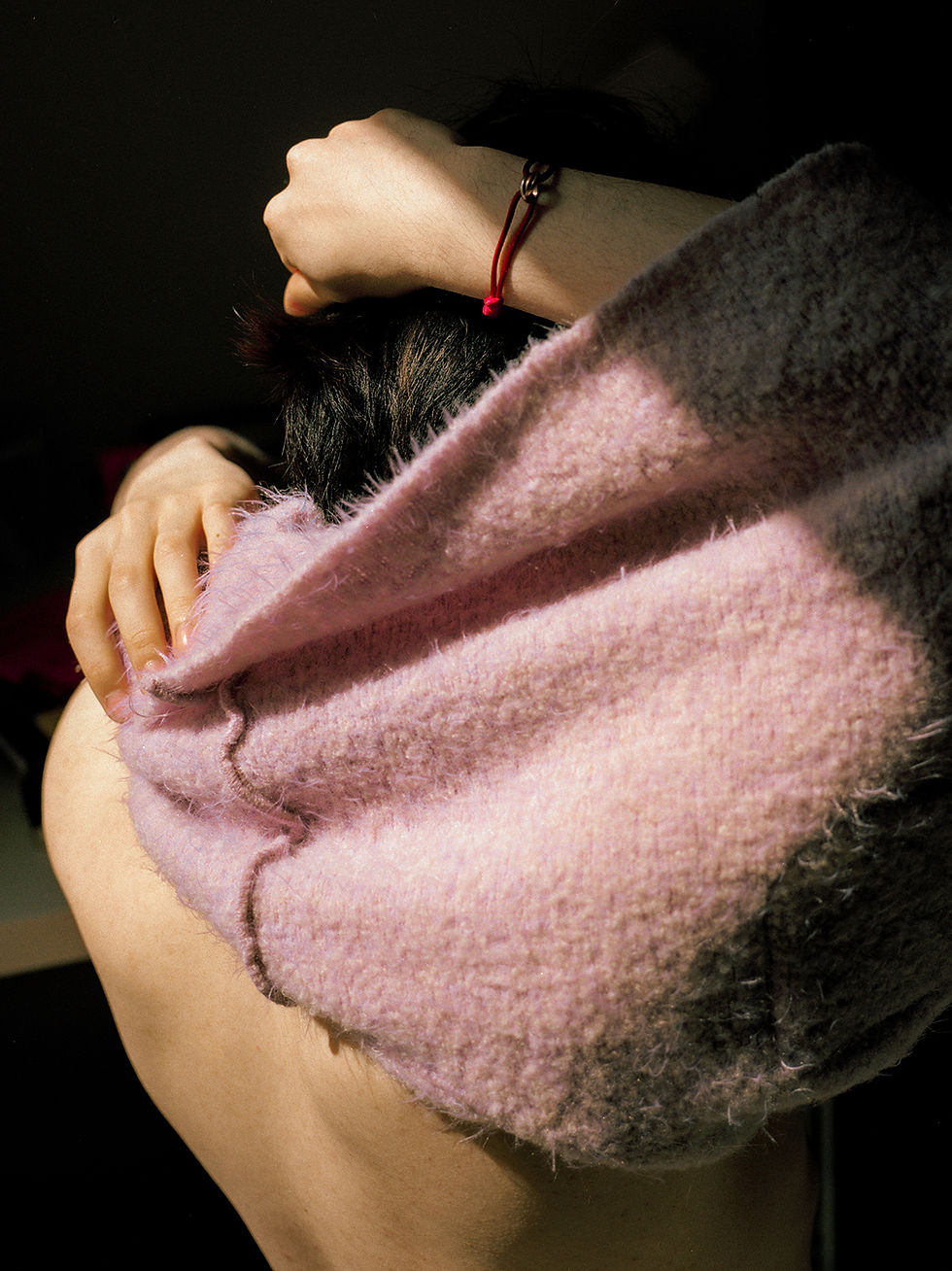Learned Helplessness By Anastasia Lukomskaya
- Amy Jiang

- Dec 13, 2022
- 3 min read
The Learned Helplessness project is a series of 25 photographs of mice as
they emerge from a mousetrap by Anastasia Lukomskaya.

Learned Helplessness By Anastasia Lukomskaya
Each photo is accompanied by a label that lists the name of the mouse, the date it was captured, and the exact time it took for it to break free. There’s also a video filmed with a
night view camera, which captures the process of catching mice. It’s a statement about freedom and self-restraint, about how a totalitarian consciousness is formed, and how fear works.

Svetlana And Its Record of Breaking Out Of the Safe Mousetrap
This project was born during the pandemic. Anastasia went to a country house 100 kilometers from Moscow and lived with her granny for almost two years in social isolation in the middle of the forest. In this house, she was incredibly pestered by mice.
They ran around the house, not afraid of anything, almost on the head, and
left traces of mouse activity everywhere. To poison small animals or to catch them with glue did not raise her hand. So every night she set a safe mousetrap, and in the morning went to set them free in the field far from home and take pictures.

Emma, Fyodor And Their Record of Breaking Out Of the Safe Mousetrap
Anastasia noticed a very strange thing. All night long, her little prisoners selflessly gnawed at the grate, trying to get out. So some rods have been successfully gnawed
through by several generations of mice. But by morning the will to freedom was completely gone. The rodents resigned themselves to the fact that they would never get out of the cage and stopped trying to do something. Even when she carried the mice to the field and opened the door, many of them froze in the depths of the mousetrap, not daring to go free.

Zhenya And Its Record of Breaking Out Of the Safe Mousetrap
This is very similar to the behavior of people living under autocracy. Why don't they resist? Why don’t they say the truth, don’t defend their rights, don’t protest, even when the risks are minimal? Repressive consciousness breeds repression, self-censorship breeds censorship. It is known that elephants are trained in this way - in childhood, they are put on a chain that a small elephant is not able to break. And even when he grows into a big multi-pound elephant, able to free himself without extra effort, he still thinks that the chain is too strong for him. In the same way, totalitarian states train people, making them incapable of resistance.

A screenshot from the video
Filming the project was a performative act itself. To create the atmosphere of a laboratory experiment, Anastasia built a portable photo studio for mice, painted white. A photo studio, a stool, a tripod, and a bag with a mouse were loaded into a wheelbarrow, and
she carried them to the field. There she arranged the equipment in such a way that the camera stood opposite the exit from the mousetrap, opened the door and noted the time on a stopwatch. Some mice made a circle around the cage and hid back inside, not daring to escape. And one mouse sat behind bars for more than an hour, not daring to believe that the mousetrap door was open.

The Portable Filming Studio
It is symbolic that the text for this project was censored at the exhibition in Moscow. A week before the opening, representatives of the gallery asked Anastasia to remove the word “freedom” from the text and the statement that entire countries could be subject to learned helplessness. This is an example of self-censorship, which is stronger
than censorship - we forbid ourselves the freedom of speech before someone from above even tries to punish us. Even if the door of the mousetrap opens itself, we will act as if it were closed.

About Anastasia Lukomskaya

Anastasia Lukomskaya is a visual artist and poet from Moscow (now living in Dubai). Graduated from the Gorky Literary Institute (2011), author of books "Stihosomatika" (2016), “The Green Fish" (2019), and conceptual photo book “Inside the Game” (2021). Currently, she is a student at Rodchenko Art School (workshop of project photography by Vladislav Efimov and Alexei Korsi). She works with such visual media as photography, video, performance art, and actionism. In her artistic practice, she explores human consciousness, the nature of fear and freedom, and the mind of a person living in a totalitarian state.




Comments